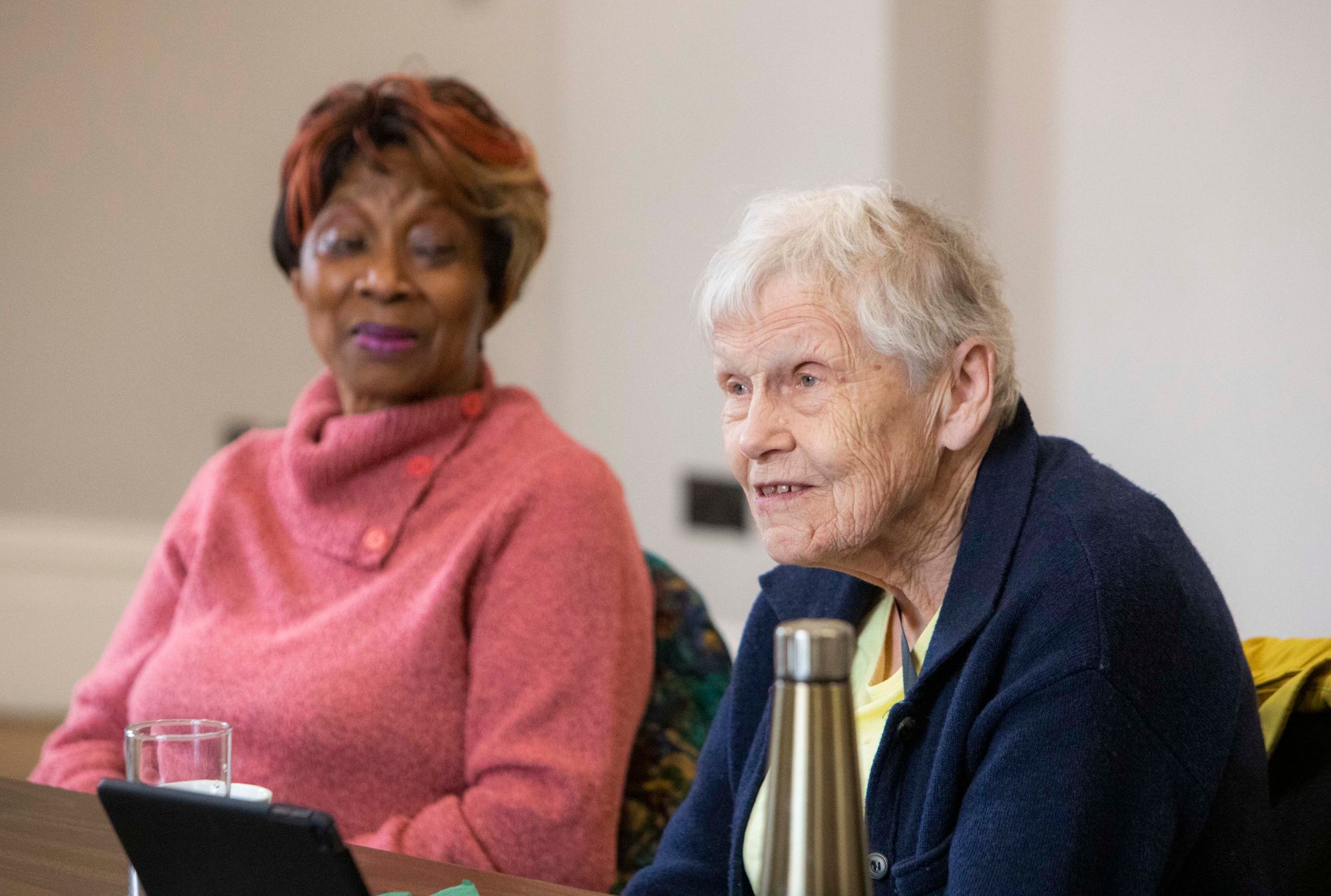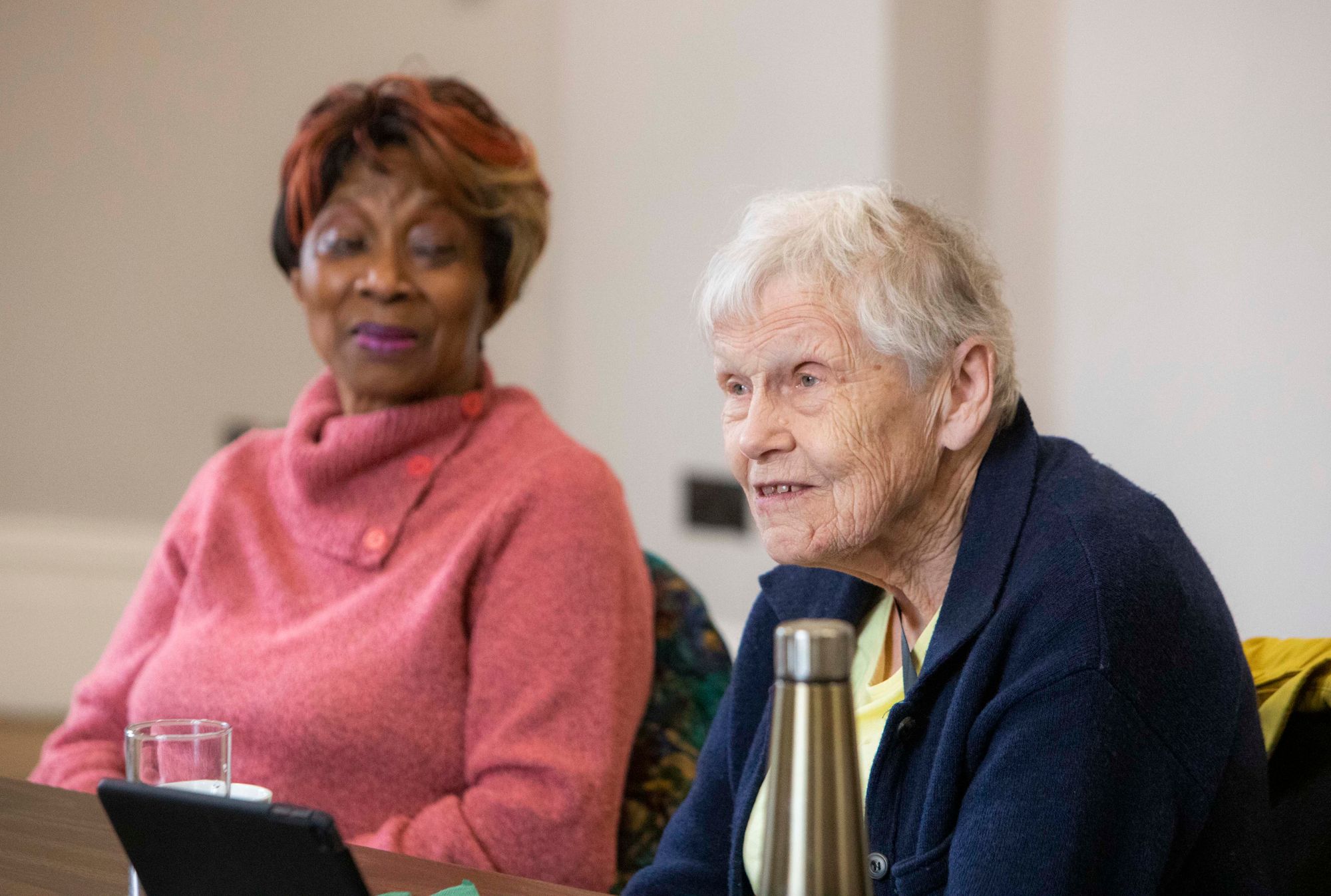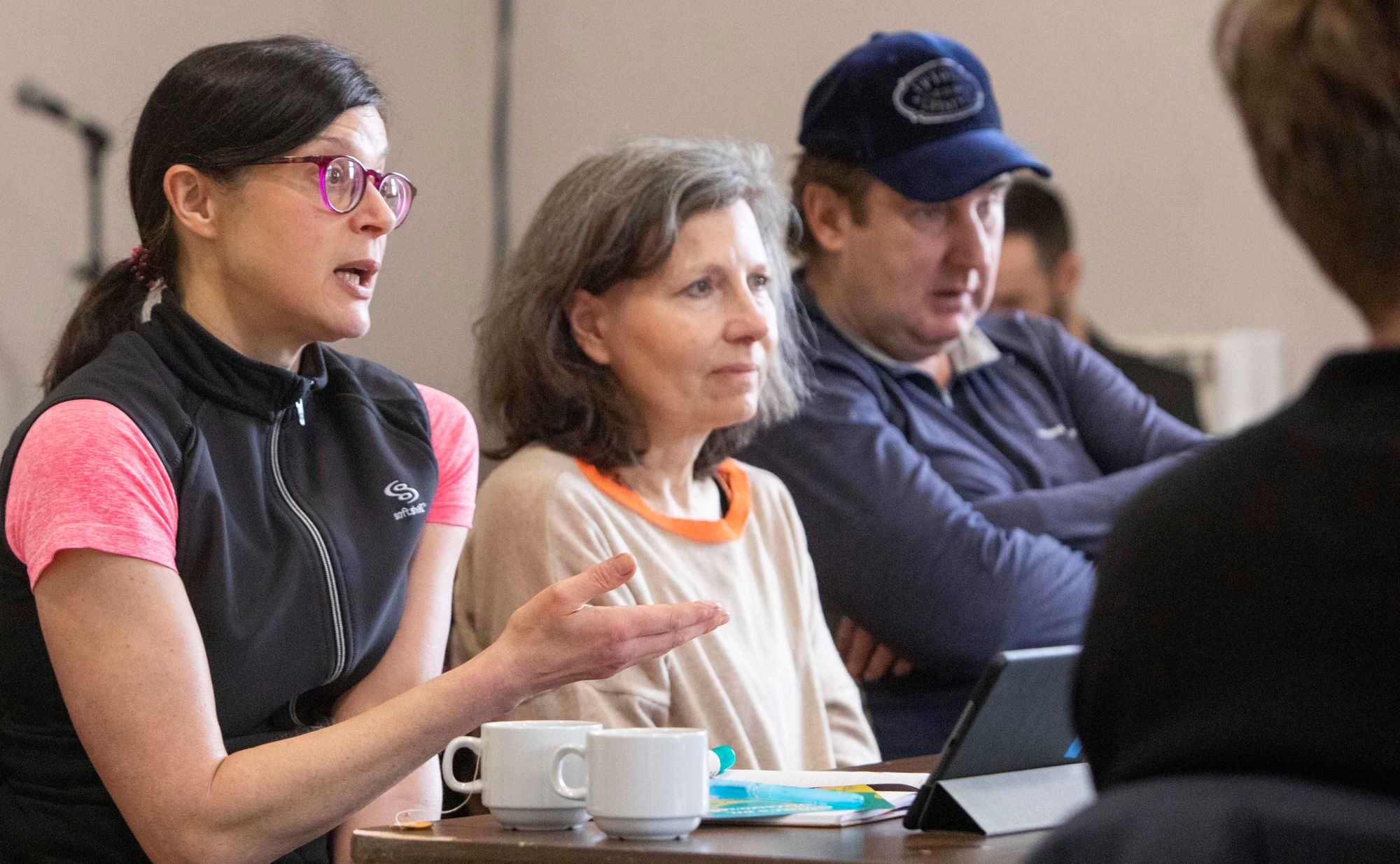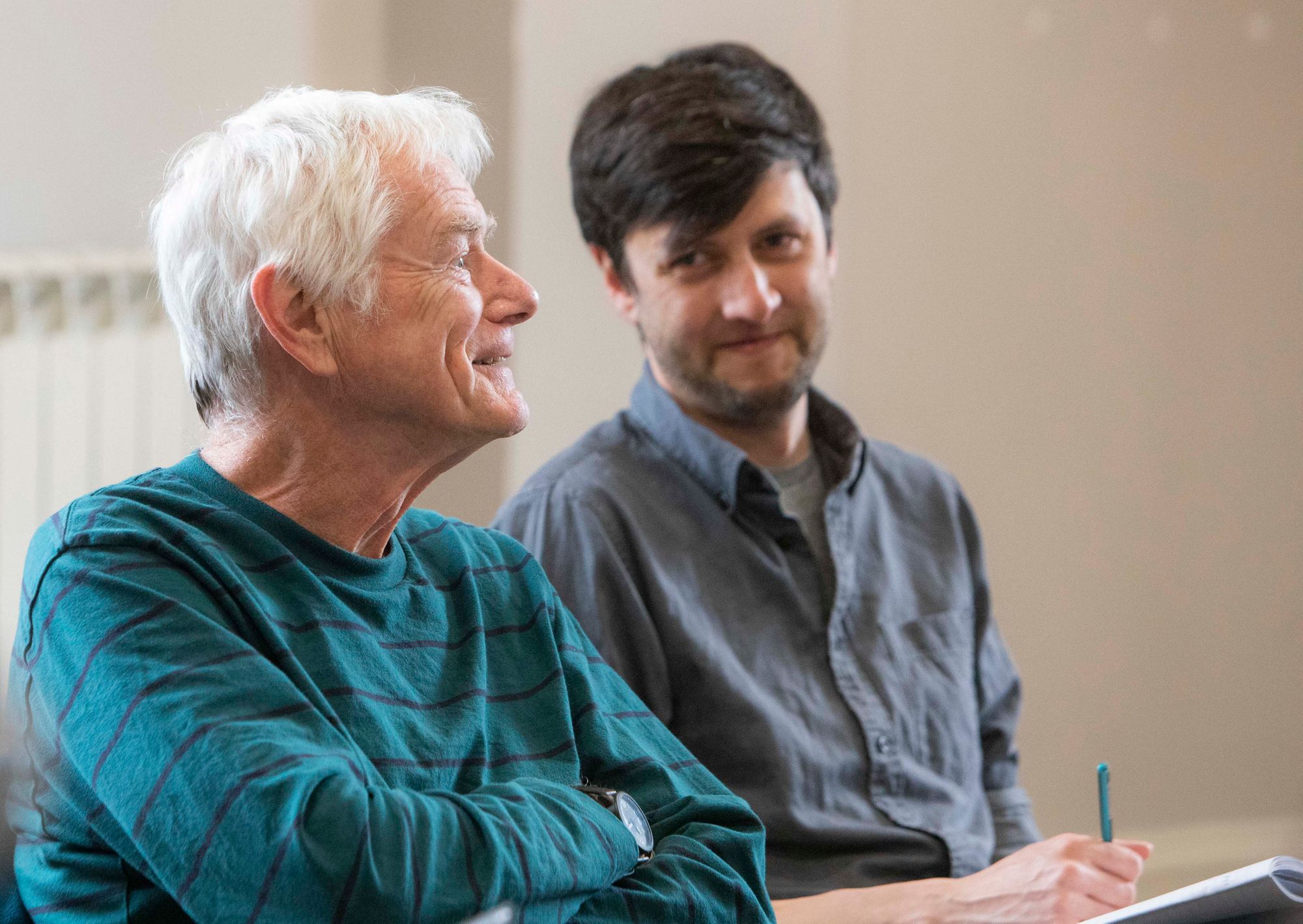The Strategy Room 3/3: 5 things we learned
From May 2022 to March 2023, Fast Familiar’s main focus was a climate action public engagement project called The Strategy Room. This blog documents the five big lessons we're taking away from the project.

Introduction
From May 2022 to March 2023, Fast Familiar’s main focus was a climate action public engagement project called The Strategy Room. This blog documents our learning, in the hopes that it might be useful to other people working in climate or creative approaches to public engagement and policy development.
There will be official research outputs from the project produced by our partners Nesta: I’ll link to these once they exist. This is a totally subjective account, written by Rachel (who led on the project). FF try to share our processes, learnings and mistakes (to avoid other people needing to repeat them) and this documentation is part of that commitment.
The documentation of The Strategy Room is in three chapters:
- the process of creating a design brief - this is likely to be interesting for people who work through co-creation, people making public engagement projects and generally people working in climate engagement
- the structure of the project and its delivery - for people who make audience-centric and interactive experiences - and people working with local authorities
- the 5 things we learned - read this if you work in climate engagement - or actually any area trying to engage a broad range of people (with a complex subject)
Each of the three chapters is a standalone piece; if you’re going to read all of them, it would make most sense to read them in this order. This is Chapter 3.
The Strategy Room was commissioned by the Centre for Collective Intelligence Design (CCID) at Nesta. They published a tender which FF applied for, in collaboration with UCL’s Climate Action Unit (CAU), which is headed up by our longtime collaborator and friend Kris De Meyer. The brief was to make a participatory experience which would help local authorities understand what net zero measures could have support in their area.
You can listen to Rachel reading the full post here…
Chapter 3: Five things we learned
As I said before, Nesta will publish a big research paper on the project, which I’ll link to once that exists. This is about qualitative observations and the things we learned while making the experience.
1. Climate change deniers are few and far between
Let’s start with the good news. This isn’t 2015. Things have changed. Whether it was the intense heat in summer 2022 or something else, we seem to have moved on, as a society, from the tedious ‘but is it really happening?’ conversation.
In all our testing and delivery, we only met one person who contested the idea of manmade climate change, and they actually supported a number of the policies for other reasons. As a useful stat, according to IPSOS-MORI, the number of UK people concerned or very concerned about climate change has been around 80% for some time; it dipped to 76% in the heady early days of the pandemic, when perhaps people had some other things on their mind, but since then it’s reliably 4/5 of UK people. So let’s get on with some action!

2. Change the record: the headline doesn’t have to be about climate change
One of the things we were interested in with this project was exploring the different ways you can ‘frame’ or present net zero policies, so telling a story of health or economic benefit, rather than talking about them as solely climate change policies, things you’d do to save the planet.
30 - 55% of the UK population are already motivated to take action on climate change - because it’s something they believe is important. Low impact actions that are easy to do (like recycling) poll towards the 55%. Higher impact actions (and those with a cost involved) like changing your domestic heating set-up or your diet poll more towards 30%, so around a third of people feel you should do these things, simply because of climate change. But this means that 45-70% of the UK population need climate action framed in a different way, in order to get on board with it - for them, the fact it’s good for the planet isn’t motivation enough.
Lots of climate change action has health or social benefits; these other benefits are sometimes called ‘co-benefits’. For example, changing public procurement regulation for food in hospitals could allow hospitals to source fresher, more seasonal, more locally-produced food that contributes to patient recovery, and supports the local economy - these are the co-benefits. It would also allow the hospital to reduce the amount of red meat used - something that’s vital for climate change.
In The Strategy Room, the characters speak about the net zero policies that have happened in their versions of the future in terms of how they have affected their lives and the lives of people they care about - a town planning measure that has reduced fast-moving traffic and made it safer for a visually-impaired child to walk to school independently; the difference that a new heating set-up has made for an elderly parent’s comfort; the jobs that a new community energy scheme has created locally. In order to get more people onboard with climate action, we need to make the case for it in a variety of ways.
3. The values of diversity
FF are actively committed to representation within the experiences we make; even our online puzzle games (the sillier/ lighter end of of our ‘offering’) are regularly praised for featuring characters of different ethnicities, religions and sexualities, characters with disabilities, characters who are neurodivergent and characters with different body shapes. With The Strategy Room this was no different - we were determined that a wide range of people would see themselves represented in a net zero future and created characters from different socio-economic backgrounds, of different ethnicities and ages, and hailing from different parts of the UK (so speaking with different accents). We were pretty happy with our characters (including the detailed backstories that the audience would never find out!) and sent the scripts to Kris. ‘You have written three Pioneers,’ he told us, with typical Belgian directness. ‘This won’t work.’
Kris was referring to Cultural Dynamic’s values segmentation model, which sees people as one of three categories: Settlers, Prospectors or Pioneers. I really recommend you go and look this up (there’s even a free quiz on the site that you can do) but in very broad terms, these three groups are motivated by different things. The same word will trigger them in entirely different ways. ‘Future’ is a good example. For Pioneers, the future tends to be positive, a time when we may have fixed the problems of the present like inequality - or climate change. For Prospectors, you need to caveat ‘future’ with the fact it will be positive - a time of increased material wealth or higher social status, for example. For Settlers, ‘future’ is threatening and rarely positive - unless it’s more like the past, so ‘in the future, children will be able to play out in the street, like we used to be able to do.’
We had written three characters who used language like Pioneers and were motivated by Pioneer values. They may have been diverse in lots of other ways, but in this sense, they were all the same - and that needed to change. It didn’t mean changing the policies they talked about, it meant changing the reasons that they liked or disliked them. So David’s reason for switching to an electric vehicle changed from a sense of social responsibility to the fact that the particular model he chose looked good, handled well, and accrued him respect within his social circle. He still bought the EV, but for Prospector, rather than Pioneer reasons.
In many ways, this continues from point number 2, about framing - we need to learn to talk about climate action in ways that appeal to people with different values - and be much more conscious of how we could be alienating vast swathes of the UK population simply with the language we use. The survey completed at the end of The Strategy Room experience placed participants on the Cultural Dynamics values segmentation landscape, so analysis of the data should help us understand better how different framings and communications of different net zero policies could appeal to people from different places in that model. This is something we at FF are really excited about.

4. Seeing is believing
While there was real regional variation in support for different policies, there were measures which consistently polled well. One of these (within the heat+energy module) was community energy schemes, and another (within the travel module) was town centre redevelopment - which is a mixture of low traffic neighbourhoods and 15 minute cities, without mentioning either of those things, as they can be quite polarising.
With community energy schemes and town centre redevelopment, one of the talking points in discussions was often visibility. Many participants perceived it to be a positive feature of both these policies - people said things like ‘once people see it happening, more of them will get behind it’ and ‘it’s something people can get involved in, so you feel like you’re doing something’ (In the case of community energy schemes, getting involved could look like buying shares or using the energy; with town centre development, it would more be about using spaces differently e.g. walking or cycling your kids to school, rather than driving them). People also talked about the community value of these things - that both would contribute to seeing and getting to know more people locally.
More research needs to be done into this, but I wonder if those of us trying to support climate action are still slightly stuck in the ‘don’t mention climate change or we’ll have to have the does-it-exist debate’ headspace. (I also acknowledge how heated the debates about Low Traffic Neighbourhoods got, and why we’d want to avoid a re-run of that.) But as mentioned in (1), I think the situation has changed - people are overwhelmingly aware of climate change and the need to do something about it. When running The Strategy Room, and other climate action projects, we are often asked by participants what they should be doing - people are desperate to take action but don’t know where to start, or what more they should be doing. Participants also talked about feeling powerless - and kind of paralysed by the enormity of what’s happening. Being part of something, especially with other people, can move people out of this place of paralysis. Even seeing something happening can be comforting - a parent with kids at a school where a community solar project had been installed on the roof talked about how just seeing it gave them hope. I don’t think we should underestimate the effect of the feeling of being part of something, or seeing other people (other people ‘like us’) already taking action. It makes change feel possible.
In some ways, these demonstrator effects or the visibility of climate action runs at odds with what I’ve said in (2) about the need for different framings - but it doesn’t have to. Community energy projects are about a shift to renewable energy but they can also be about local pride, community action, energy security and job creation - all of which will appeal to different people, and can be triggered by visibility.

5. An issue of trust
If different framings for net zero policies feel like a way to get more people to support climate action, then losing people’s trust emerged as a surefire way to turn off even the most ideologically-committed. Participants in a number of local authority areas expressed a lack of trust in the council to deliver net zero measures. While in some places, differences of political opinion were a factor in this (e.g. Labour voters not trusting a Tory council), in others there were less partisan reasons for distrust. Sandwell Council is subject to a corruption inquiry; councillors in Southend (of all political persuasions) feature regularly in the local press for bullying, harassment and other improprieties.
Councils can also cause erosion of trust by mismanagement of past initiatives - multiple people in London (including card-carrying members of the climate choir) talked about the failures of Solar Together, a renewable energy campaign launched by the GLA in 2018. In March 2023, one of its approved contractors, Green Energy Together, went bankrupt, leaving people who’d signed up out of pocket by as much as £2K of their deposit. (Issues with similar schemes have happened in other parts of the country.)
We exist in an age of falling trust. Brits’ confidence in parliament sits at an all time low of 23%, with confidence in the police and the press also at all-time lows. Those responsible for net zero measures, at national, local or any other level, need to be aware of the climate of distrust we’re living in - and to pay particular attention to how their actions affect perceptions of trustworthiness.
Net zero needs buy-in from everyone.

